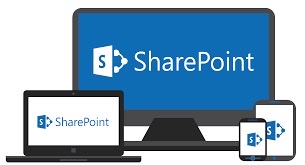As businesses gear up for the launch of Copilot, Microsoft’s AI-powered assistant integrated within Microsoft 365, it’s crucial to address potential issues that could affect its implementation. One significant concern is oversharing in SharePoint. Ensuring that sensitive information isn’t inadvertently shared is vital for maintaining data security and compliance. In this blog post, we’ll analyze the causes of SharePoint oversharing and outline steps to fix these issues before introducing Copilot.
Understanding SharePoint Oversharing
Oversharing occurs when more people have access to files or folders than necessary. This can lead to various risks, including data breaches, intellectual property theft, and compliance violations. In a collaborative environment like SharePoint, where sharing is easy and encouraged, controlling access becomes essential.
Common Causes of Oversharing:
1.Default Sharing Settings: By default, SharePoint might allow broad access, making it easy to share with more users than intended.
2.User Misunderstanding: Users might not fully understand the implications of sharing options or how to set appropriate permissions.
3.Inherited Permissions: Permissions can be inherited from parent sites, leading to unintended access.
4.Link Sharing: Sharing via links can sometimes provide more access than necessary, especially if links are set to allow editing or are not time-bound.
Analyzing Your Current SharePoint Environment
Before making changes, it’s crucial to analyze the current state of sharing within your SharePoint environment. This involves:
1.Audit Current Permissions: Use SharePoint’s built-in audit logs to review current permissions on sensitive documents and sites.
2.Identify Sensitive Data: Classify and identify data that requires restricted access.
3.Review Sharing Settings: Examine the default sharing settings at the site collection level and for individual sites.
Steps to Fix Oversharing
Once you have a clear picture of your SharePoint environment, follow these steps to mitigate oversharing:
- Adjust Default Sharing Settings
🔹Navigate to the SharePoint admin center.
🔹Under “Policies,” select “Sharing” and adjust the settings to a more restrictive level that suits your organization’s needs.
- Educate Users
🔹Provide training sessions or materials that explain how to share responsibly.
🔹Highlight the difference between sharing for viewing vs. editing.
🔹Encourage the use of sharing settings that align with the principle of least privilege.
- Implement a Data Loss Prevention (DLP) Policy
🔹Set up DLP policies to automatically identify and protect sensitive information.
🔹Configure policies to alert or block sharing when sensitive data is detected.
- Regular Permission Reviews
🔹Schedule regular audits to review and adjust permissions.
🔹Use tools like SharePoint’s “Check Permissions” feature to verify access.
- Utilize Sensitivity Labels
🔹Apply sensitivity labels to classify and protect content.
🔹Sensitivity labels can restrict access and actions on the content based on its classification.
- Configure Sharing Links
🔹Limit the use of “Anyone with the link” options.
🔹Set expiration dates for sharing links.
🔹Default links to view-only access unless editing is specifically required.
Preparing for Copilot
With Copilot’s integration, the AI assistant will access and utilize data from SharePoint to provide insights and automate tasks. Ensuring data security and appropriate sharing practices before Copilot’s launch is essential. Here’s how to align your preparations:
1.Limit Copilot’s Access: Ensure Copilot’s access aligns with your organization’s data governance policies.
2.Data Classification and Labeling: Properly classify and label your data to ensure Copilot handles it appropriately.
3.Test Copilot’s Interactions: In a controlled environment, test how Copilot interacts with SharePoint data to identify any potential oversharing issues.
Conclusion
Addressing SharePoint oversharing is a critical step in preparing for the integration of Copilot. By analyzing your current environment, educating users, and implementing strict sharing controls, you can enhance data security and ensure a smooth transition to using Microsoft’s AI assistant. Stay proactive in managing permissions and continually review your practices to adapt to evolving security needs.
By following these guidelines, your organization will be better positioned to leverage Copilot’s capabilities without compromising on data security.








